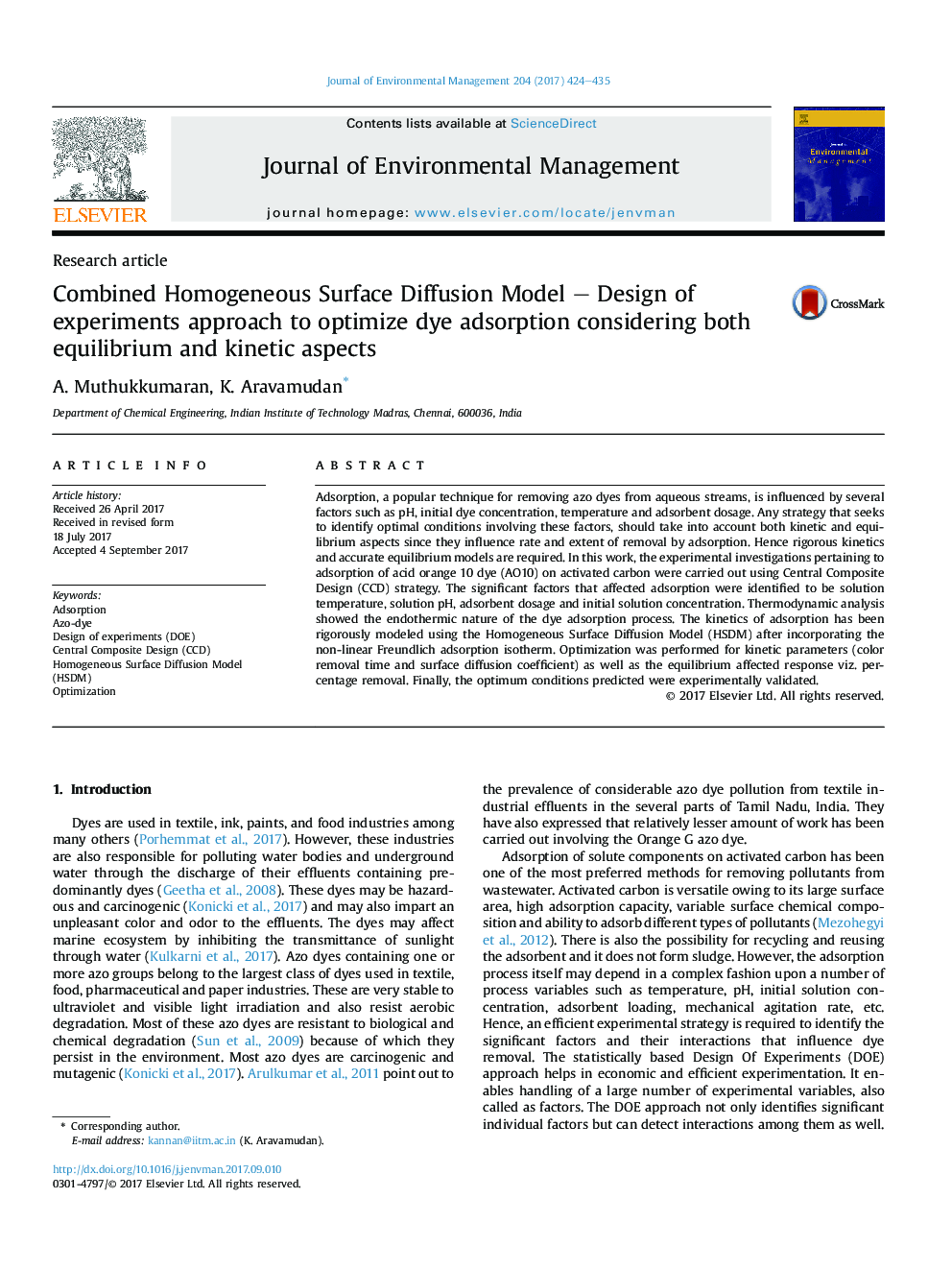| Article ID | Journal | Published Year | Pages | File Type |
|---|---|---|---|---|
| 5116280 | Journal of Environmental Management | 2017 | 12 Pages |
Abstract
Adsorption, a popular technique for removing azo dyes from aqueous streams, is influenced by several factors such as pH, initial dye concentration, temperature and adsorbent dosage. Any strategy that seeks to identify optimal conditions involving these factors, should take into account both kinetic and equilibrium aspects since they influence rate and extent of removal by adsorption. Hence rigorous kinetics and accurate equilibrium models are required. In this work, the experimental investigations pertaining to adsorption of acid orange 10 dye (AO10) on activated carbon were carried out using Central Composite Design (CCD) strategy. The significant factors that affected adsorption were identified to be solution temperature, solution pH, adsorbent dosage and initial solution concentration. Thermodynamic analysis showed the endothermic nature of the dye adsorption process. The kinetics of adsorption has been rigorously modeled using the Homogeneous Surface Diffusion Model (HSDM) after incorporating the non-linear Freundlich adsorption isotherm. Optimization was performed for kinetic parameters (color removal time and surface diffusion coefficient) as well as the equilibrium affected response viz. percentage removal. Finally, the optimum conditions predicted were experimentally validated.
Keywords
Related Topics
Physical Sciences and Engineering
Energy
Renewable Energy, Sustainability and the Environment
Authors
A. Muthukkumaran, K. Aravamudan,
